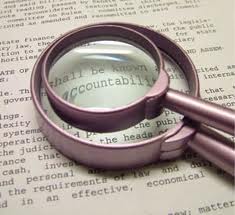 Today is my fifth and final blog post dedicated to the 2012 annual campaign planning process, and as I did with the previous four posts I’m putting it to music just for the fun of it. Today’s post focuses on the project management components of your plan.
Today is my fifth and final blog post dedicated to the 2012 annual campaign planning process, and as I did with the previous four posts I’m putting it to music just for the fun of it. Today’s post focuses on the project management components of your plan.
Cue the music . . . click here for your first musical selection then start reading. 🙂
Getting your volunteers around a table to talk about big picture things — like your annual campaign goal, volunteer recruitment strategies, and policies — really just amount to dreaming and wishing. The magic really happens when the discussion is finally had around: ‘who’ is doing ‘what’ and ‘where’ are they doing it, and by ‘when’ it needs to get done.
For me, the old expression “How do you eat and elephant? One bite at a time!” comes to mind.
When fundraising staff roughs out a project management task list and hands it over to volunteers, I’ve never seen a happy ending associated with this strategy. Think of it this way — how can one person know what everyone else is capable and willing to do? Isn’t there an old expression about “ass-uming”???
This is an opportunity to engage people around getting stuff done, and it doesn’t have to be very complicated. Here is what my “To Do List” for a staff person might be for facilitating this part of the annual campaign planning process:
- Download a project management task list template from the internet or construct a simple one in a Microsoft Excel spreadsheet. Or use Microsoft Project to organize things.
- Look at the campaign in its entirety and start breaking it out into small bite size tasks. The smaller, the better! Add those tasks to your punch list template.
- Organize a meeting of your annual campaign volunteers and go the extra mile to find a date/time that works for as close to 100% of the team. Trust Madonna when it comes to this step.
- Send the draft task list out to volunteers well in advance of the meeting. Ask everyone to review the tasks and come prepared to talk about when they think certain tasks can realistically be accomplished and who needs to be asked to do which tasks. Most importantly, ask them to think about which tasks they really want to personally volunteer to do.
- At the meeting, start by facilitating a discussion around timeframes and deadlines for individual tasks. Always keep in mind that some tasks are more critical than others. For example, the solicitation materials need to be designed and printed before volunteer solicitors can make any solicitations. A Gantt Chart might be useful as part of this exercise, or it might be something you assemble afterward to ensure the committee’s first draft works.
- After roughing out timeframes, ask everyone to roll up their sleeves and facilitate a discussion around: ‘who wants to do what?’ This discussion might involve people jumping in to personally grab certain tasks. It might turn into a discussion focused on who else needs to be recruited or asked to sit around the table. Regardless, these are good conversations because it represents the sound of “engagement”.
If there is silence during this last step (cue Simon & Garfunkel), then you just learned something else. You found out that your campaign is in danger of failing. The good news is that you discovered this way before launching your campaign, and there is still time to recruit more volunteers and get it together. Whatever you do, DON’T try to force the meeting because the it will end up looking like the one facilitated by this kid on YouTube. More importantly, the engagement you thought you just gained will all be fake and worth nothing during the campaign if you strong-arm people into doing something they don’t want to do.
Yes, this activity can be time-consuming, but it is a wise investment. Not only will you get people engaged, but it will become an important accountability tool during the implementation phase of your campaign. If used correctly, your project management task list (created with volunteer input) will help keep the “Procrastination Song” out of volunteer’s heads as they travel down that road with you. 🙂
How does your organization go about creating its project management tools for the annual campaign? Are there certain templates you like more than others? Can you point to those tools online? Do you have a success story or lesson learned around engaging volunteers in this process that you’re willing to share? Please use the comment box below to weigh-in because we can all learn from each other.
Here is to your health!
Erik Anderson Founder & President, The Healthy Non-Profit LLC eanderson847@gmail.com http://twitter.com/#!/eanderson847 http://www.facebook.com/eanderson847 http://www.linkedin.com/in/erikanderson847








